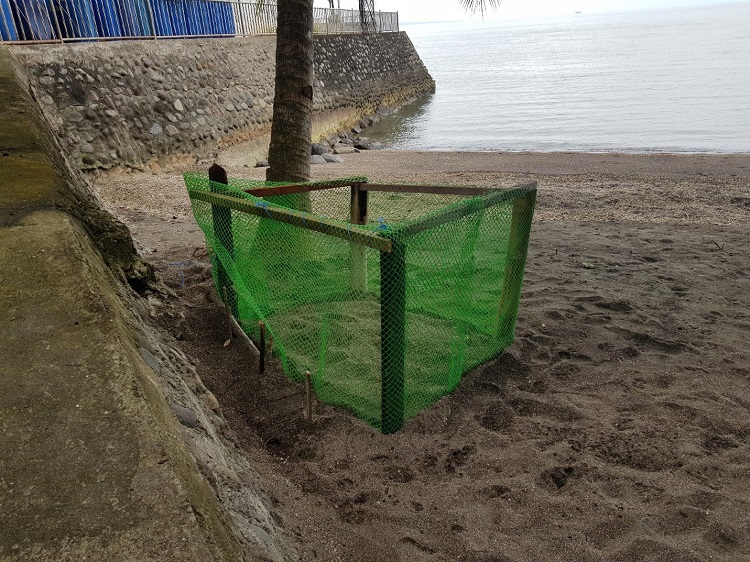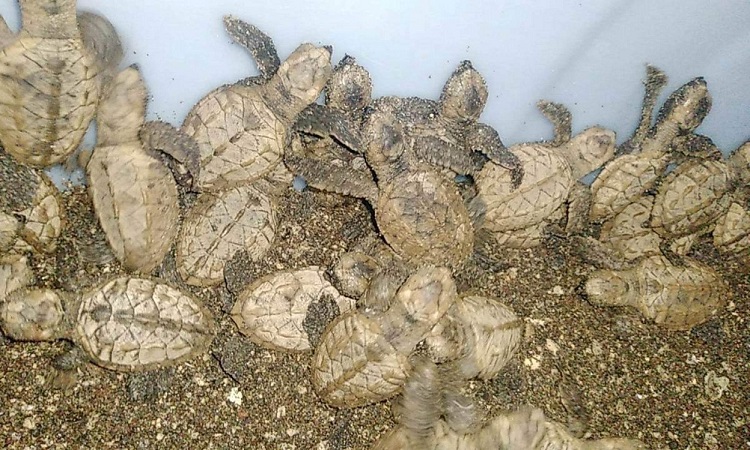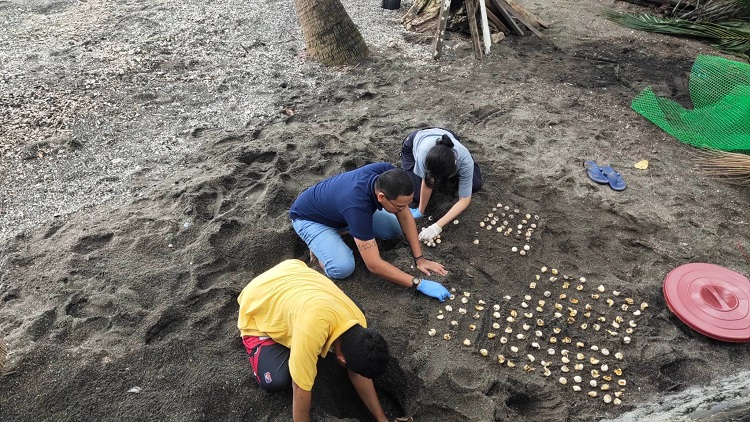By Friday Atilano & Sue Ong
On the night of November 16, 2022, a female Hawksbill turtle (Eretmochelys imbricata) was spotted crawling toward the shore of the Marine Station and began nesting by digging an egg cavity using the flippers as shovels.

Fence built around the turtle nest to protect it from predators
Experts are familiar with the amazing navigational abilities of marine turtles, which allow them to return to the beach of their birth after traveling thousands of miles across the sea. Once they reach sexual maturity at around 20–30 years old, following the mating season, they come back to their natal beach to lay their eggs.
Hawksbill turtles can lay 3 to 5 clutches of eggs per nesting season and each clutch contains an average of 100 to 200 eggs. After about 2 months, the eggs in the nest are expected to hatch and emerge from the nest. And true enough, a total of 115 hatchlings were immediately released at the marine station upon emergence from the nest.

Newly hatched Hawksbill sea turtles
After the eggs in the nest have finished hatching for a couple of days, wildlife biologists excavate the nest to collect data on the hatching success of the nest. They investigate and record the findings such as unhatched eggs, hatched shells, broken eggs, and stranded live hatchlings.

Local wildlife biologists conduct turtle nest investigations. In photos: [L-R] Lester Ihong (Marine Station Utility Staff), Rex Abao (SHS Faculty), Sue Ong (XU Aluma/Marine Turtle Conservationist)
This is a great milestone for the XU Marine Station in Solana, Jasaan, which has become one of the marine turtles nesting sites in Macajalar Bay. In fact, 10 years ago, sea turtles nested in the station three times in 2012. Among known sites are the municipalities of Alubijid, El Salvador, Opol, Salay, Sugbongcogon, and the city of Cagayan de Oro.
Marine turtles have been around for millions of years but unfortunately, their population has been declining due to pollution, bycatch, marine debris, climate change, illegal wildlife trade, and habitat destruction and degradation. Conservation efforts have been made by many organizations across the globe to try to conserve this keystone species so that it can continue playing its important role in the ocean ecosystem for generations to come.